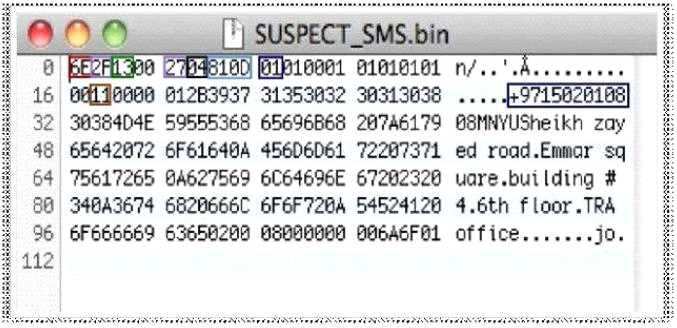Eccouncil 312-49 Exam Questions
Questions for the 312-49 were updated on : Jul 05 ,2025
Page 1 out of 33. Viewing questions 1-15 out of 486
Question 1
What is the First Step required in preparing a computer for forensics investigation?
- A. Do not turn the computer off or on, run any programs, or attempt to access data on a computer
- B. Secure any relevant media
- C. Suspend automated document destruction and recycling policies that may pertain to any relevant media or users at Issue
- D. Identify the type of data you are seeking, the Information you are looking for, and the urgency level of the examination
Answer:
A
Question 2
Network forensics can be defined as the sniffing, recording, acquisition and analysis of the network
traffic and event logs in order to investigate a network security incident.
- A. True
- B. False
Answer:
A
Question 3
Which of the following commands shows you the names of all open shared files on a server and
number of file locks on each file?
- A. Net sessions
- B. Net file
- C. Netconfig
- D. Net share
Answer:
B
Question 4
The Recycle Bin exists as a metaphor for throwing files away, but it also allows user to retrieve and
restore files. Once the file is moved to the recycle bin, a record is added to the log file that exists in
the Recycle Bin.
Which of the following files contains records that correspond to each deleted file in the Recycle Bin?
- A. INFO2 file
- B. INFO1 file
- C. LOGINFO2 file
- D. LOGINFO1 file
Answer:
A
Question 5
Email archiving is a systematic approach to save and protect the data contained in emails so that it
can be accessed fast at a later date. There are two main archive types, namely Local Archive and
Server Storage Archive. Which of the following statements is correct while dealing with local
archives?
- A. It is difficult to deal with the webmail as there is no offline archive in most cases. So consult your counsel on the case as to the best way to approach and gain access to the required data on servers
- B. Local archives do not have evidentiary value as the email client may alter the message data
- C. Local archives should be stored together with the server storage archives in order to be admissible in a court of law
- D. Server storage archives are the server information and settings stored on a local system whereas the local archives are the local email client information stored on the mail server
Answer:
A
Question 6
Which of the following email headers specifies an address for mailer-generated errors, like "no such
user" bounce messages, to go to (instead of the sender's address)?
- A. Errors-To header
- B. Content-Transfer-Encoding header
- C. Mime-Version header
- D. Content-Type header
Answer:
A
Question 7
Which of the following commands shows you all of the network services running on Windows-based
servers?
- A. Net start
- B. Net use
- C. Net Session
- D. Net share
Answer:
A
Question 8
Email archiving is a systematic approach to save and protect the data contained in emails so that it
can tie easily accessed at a later date.
- A. True
- B. False
Answer:
A
Question 9
Which of the following commands shows you the NetBIOS name table each?
- A. nbtstat -n
- B. nbtstat -c
- C. nbtstat -r
- D. nbtstat -s
Answer:
A
Question 10
Windows Security Accounts Manager (SAM) is a registry file which stores passwords in a hashed
format.
SAM file in Windows is located at:
- A. C:\windows\system32\config\SAM
- B. C:\windows\system32\con\SAM
- C. C:\windows\system32\Boot\SAM
- D. C:\windows\system32\drivers\SAM
Answer:
A
Question 11
FAT32 is a 32-bit version of FAT file system using smaller clusters and results in efficient storage
capacity. What is the maximum drive size supported?
- A. 1 terabytes
- B. 2 terabytes
- C. 3 terabytes
- D. 4 terabytes
Answer:
B
Question 12
In which step of the computer forensics investigation methodology would you run MD5 checksum on
the evidence?
- A. Obtain search warrant
- B. Evaluate and secure the scene
- C. Collect the evidence
- D. Acquire the data
Answer:
D
Question 13
Network forensics allows Investigators to inspect network traffic and logs to identify and locate the
attack system
Network forensics can reveal: (Select three answers)
- A. Source of security incidents’ and network attacks
- B. Path of the attack
- C. Intrusion techniques used by attackers
- D. Hardware configuration of the attacker's system
Answer:
A, B, C
Question 14
Determine the message length from following hex viewer record:
- A. 6E2F
- B. 13
- C. 27
- D. 810D
Answer:
D
Question 15
TCP/IP (Transmission Control Protocol/Internet Protocol) is a communication protocol used to
connect different hosts in the Internet. It contains four layers, namely the network interface layer.
Internet layer, transport layer, and application layer.
Which of the following protocols works under the transport layer of TCP/IP?
- A. UDP
- B. HTTP
- C. FTP
- D. SNMP
Answer:
A